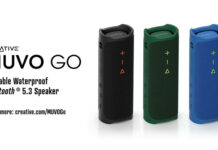Fans of compact game consoles expect several innovative new products this year. In addition to Valve’s upcoming Steam Deck, AYA’s third-generation portable console, the AYA Neo Next, powered by AMD’s new Zen3 architecture, will hit the market in the near future.
The hardware base of the new AYA Neo Next will run on a Ryzen 7 5800U (Cezanne-U) hybrid processor with eight cores and 16 threads. The joint project between AYA and AMD does not use the newly announced Ryzen 6000U (Rembrandt) APU processors with Zen3+ architecture and a new graphics subsystem. Nevertheless, the developers note that they are already working on a new modification of the console-based on Ryzen 6000U processors. As soon as the new chips become more affordable, the company will release an updated version of the console.
AYA Neo Next gets a touch screen with an IPS matrix, 7 inches and a resolution of 1280×800. The control system of the console is standard, reminiscent of the controls of the original AYA Neo console, released last year and based on the AMD Ryzen 4000U processor. In the new AYA Neo Next, the developers also added a fingerprint sensor on the power button as well as WiFi 6E and Bluetooth 5.2 support.
In total, the company plans to release four modifications of the AYA Neo Next consoles with LPDDR4x-4266 RAM from 16 to 32 GB and a memory capacity of 1 to 2 TB. The base model AYA Neo Next with 16GB of RAM and 1TB of storage is priced at $1,315.
The AYA Neo Next Advance model also has 16 GB of RAM, and the memory has been increased to 2 TB. The price of the model is 1,465 dollars. The AYA Neo Next Advance Signature Edition will be limited to just 300 units with 16GB of RAM and 1TB of storage and is priced at $1,465. The top console AYA Neo Pro with 32 GB of RAM and 2 TB of permanent storage is priced at $1,565.
As a result, the new AYA Neo Next console will cost almost twice as much as Valve’s Steam Deck. At the same time, AYA Neo Next can be pre-ordered only in February, which means that the console will be released after the Steam Deck presentation, which will also work on a newer graphics architecture and receive a more efficient memory and a developed ecosystem.







